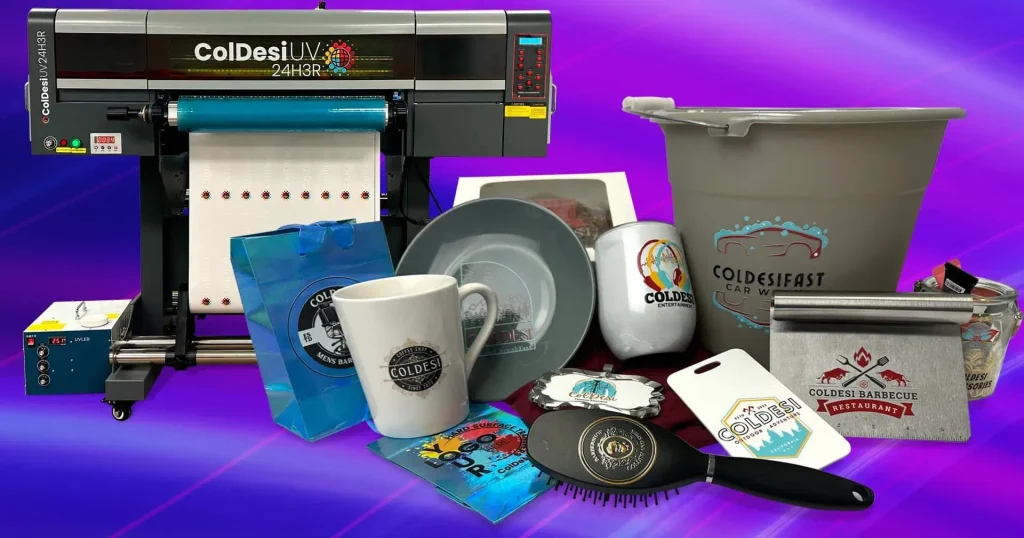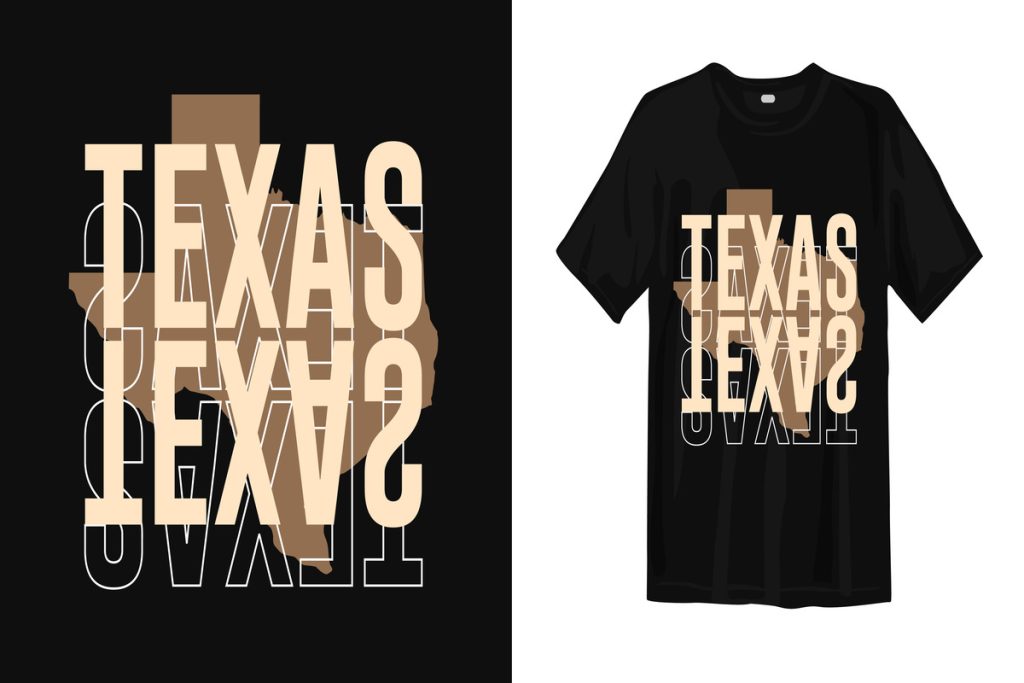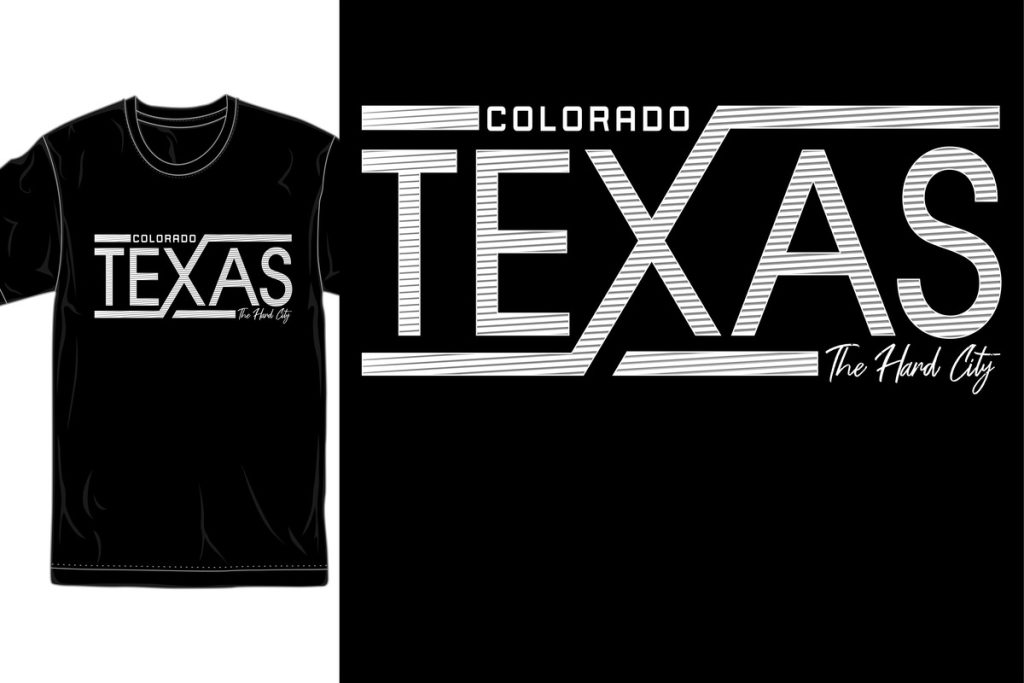UV DTF printing, or Ultraviolet Direct-to-Film printing, is a groundbreaking innovation in the realm of textile printing technology. This advanced method employs ultraviolet light to instantly cure inks onto a specially designed transfer film, which is then transferred onto various fabrics, delivering exceptional results. With the ability to create durable textile prints that resist fading and damage, UV DTF stands out as a powerful alternative to traditional printing processes. Not only does this technique facilitate vibrant colors and intricate designs, but it is also recognized for its eco-friendly printing capabilities, significantly minimizing environmental impact. As businesses increasingly embrace UV printing benefits, they are discovering a versatile solution that meets the demands of modern consumers.
Introducing a novel approach to modern textile solutions, Ultraviolet Direct-to-Film printing combines speed and quality to redefine the standards of fabric printing. This technique utilizes a specialized film that undergoes immediate curing, offering a robust alternative to standard methods like direct-to-garment or screen printing. Known for producing high-quality, eye-catching designs, UV DTF also addresses sustainability concerns, with many inks now available in eco-friendly formulations. This allows businesses to create stunning, durable textile prints without compromising their environmental responsibilities. As the fashion and apparel industries evolve, these cutting-edge printing methods are poised to deliver unmatched creativity and efficiency.
The Mechanics Behind UV DTF Printing
UV DTF printing operates by transferring designs from a film directly onto fabrics, utilizing a specialized approach that includes UV ink technology. The process begins with printing high-fidelity images onto a transfer film, subsequently curing the inks with ultraviolet light. This curing not only hardens the inks instantaneously but also binds them to the film, creating a flexible transfer that can adhere to various textile surfaces without compromising quality.
What sets UV DTF apart from traditional methods is the speed and efficiency of the curing process. Unlike standard textile printing technologies that may require multiple stages of drying or pre-treatment, UV DTF ensures that vibrant inks are immediately ready for application. This streamline-driven process leads to quicker production times and enhances workflow efficiency, making it an appealing choice for businesses in need of timely product outputs.
Exploring Eco-Friendly Aspects of UV DTF Technology
With growing awareness surrounding environmental concerns, the textile printing industry is shifting towards more sustainable practices, and UV DTF printing is at the forefront of this change. By employing eco-friendly inks that emit fewer volatile organic compounds (VOCs), this technology not only reduces harmful emissions but also caters to a rising demographic of eco-conscious consumers looking for sustainable products.
Moreover, the absence of pre-treatment chemicals generally required in conventional printing methods further strengthens UV DTF’s eco-friendly credentials. Eliminating additional chemical treatments minimizes the risk of water pollution and waste, allowing companies to adopt a more environmentally responsible approach without compromising print quality or durability.
Unmatched Color Vibrancy and Print Detail
One of the most significant advantages of UV DTF printing is its ability to produce exceptionally vibrant colors and intricate details. Leveraging high-performance UV inks, this method delivers prints that boast enhanced color saturation and clarity, which are crucial for making a statement in the competitive fashion industry. Brands can achieve stunning graphics that capture consumer attention and make strong visual impressions.
The technology’s capability to reproduce fine details accurately allows for creative expression and innovation in design, setting UV DTF printing apart from traditional techniques. With the ability to print complex patterns, gradients, and textures seamlessly, businesses can create unique products that resonate more profoundly with targeted audiences, ultimately driving sales and brand loyalty.
Durability of UV DTF Prints in Everyday Use
The durability of UV DTF prints is another crucial aspect that makes this printing technology a preferred choice for many textile applications. The unique curing process ensures that once the inks have been applied to the fabric, they effectively become a part of it. As a result, the printed designs resist fading, cracking, or peeling, even after several washes, making them ideal for high-wear items like uniforms and activewear.
Additionally, this robustness allows brands to confidently market their products as long-lasting, supporting claims of quality and durability. In an era where consumers prioritize value and longevity in their purchases, the lasting performance of UV DTF printed products helps businesses differentiate themselves within a saturated market.
The Versatility of UV DTF Printing Applications
UV DTF printing’s versatility extends beyond textile applications, making it suitable for a vast array of promotional and custom products. From apparel to accessories and home textiles, this technology can enhance nearly any fabric type, allowing businesses to tap into diverse markets and cater to various customer preferences. This adaptability opens new avenues for creativity and innovation, giving brands the opportunity to explore unique product offerings.
Moreover, the ability to print on unconventional materials and textures further reinforces UV DTF’s position as a game-changer in the printing industry. Whether it’s custom sportswear, unique fashion pieces, or bespoke promotional items, its flexible application enables brands to respond to custom orders with speed and precision, ultimately meeting and exceeding customer expectations.
Recent Innovations in UV DTF Printing Technology
Technical advancements in UV DTF technology have provided the industry with substantial improvements in print quality and production efficiency. Recent innovations include the development of improved ink formulations that not only enhance final print results but also adhere to eco-friendly production standards. These advancements prove that the pursuit of quality does not come at the expense of sustainability.
Additionally, the incorporation of automation and artificial intelligence in the printing workflow has granted businesses the capacity to scale operations significantly. With faster set-up times, superior accuracy, and reduced human error, these developments have redefined what’s possible in textile production, ensuring that organizations can keep pace with market demands without sacrificing the quality of their prints.
Frequently Asked Questions
What is UV DTF printing and how does it work?
UV DTF printing, or Direct-to-Film printing, is a cutting-edge textile printing technology that utilizes ultraviolet light to cure inks directly onto a special transfer film. This process allows for vibrant and detailed designs to be printed rapidly, which are then transferred onto various fabrics including cotton and polyester. By curing the inks instantly, UV DTF eliminates drying time and enhances production efficiency.
What are the advantages of using UV DTF printing for textile production?
UV DTF printing offers several benefits, including high durability, vibrant colors, and versatility across different fabric types. This eco-friendly printing technology produces exceptionally robust prints that resist fading and withstand harsh washing conditions, making it ideal for items like uniforms and custom apparel.
Can UV DTF printing produce eco-friendly prints?
Yes, UV DTF printing can utilize eco-friendly inks that significantly reduce environmental impact by minimizing harmful solvents and volatile organic compounds (VOCs). As sustainability becomes increasingly important, manufacturers are developing UV inks that align with eco-conscious printing practices.
How does UV DTF printing compare to traditional printing methods?
Compared to traditional textile printing methods like inkjet or dye sublimation, UV DTF printing stands out due to its durability and color vibrancy. Prints produced through UV DTF are less prone to fading and maintain quality over countless washes, while also eliminating the need for fabric pre-treatment, streamlining the production process.
What types of fabrics can be printed using UV DTF technology?
UV DTF technology is versatile and can be effectively used on a wide range of fabrics. This includes natural fibers like cotton, synthetic materials like polyester, and blends, making it suitable for various applications in the fashion industry, promotional products, and custom apparel.
What recent advancements have been made in UV DTF printing technology?
Recent advancements in UV DTF printing include improved ink formulations that enhance print quality while maintaining eco-friendly standards. Additionally, the integration of automation and AI in printing equipment has significantly increased production speed and efficiency, meeting the high demands of today’s fast-paced textile industry.
| Key Advantages | Description |
|---|---|
| Versatility in Applications | Can be used on various fabrics, catering to diverse market needs. |
| High Durability | Resistance to fading, maintaining vibrancy through multiple washes. |
| Brighter Colors and Detail | Uses high-performance inks for vivid graphics and fine detail reproduction. |
| Eco-Friendly Options | Reduced environmental impact with eco-friendly UV inks. |
| No Need for Pre-Treatment | Eliminates fabric pre-treatment steps, simplifying workflows. |
Summary
UV DTF Printing is revolutionizing the textile industry with its innovative approach to delivering high-quality prints on fabrics. This technology leverages ultraviolet light to cure inks, creating vibrant and durable designs without the need for lengthy drying times. As businesses seek to stand out in a competitive market, UV DTF Printing allows for versatility across various textiles, making it suitable for diverse applications from promotional items to activewear. Furthermore, with advancements in eco-friendly ink options, UV DTF aligns with sustainable practices, appealing to environmentally conscious consumers. As this technology continues to evolve, it represents a significant shift towards efficiency and quality in textile printing.



